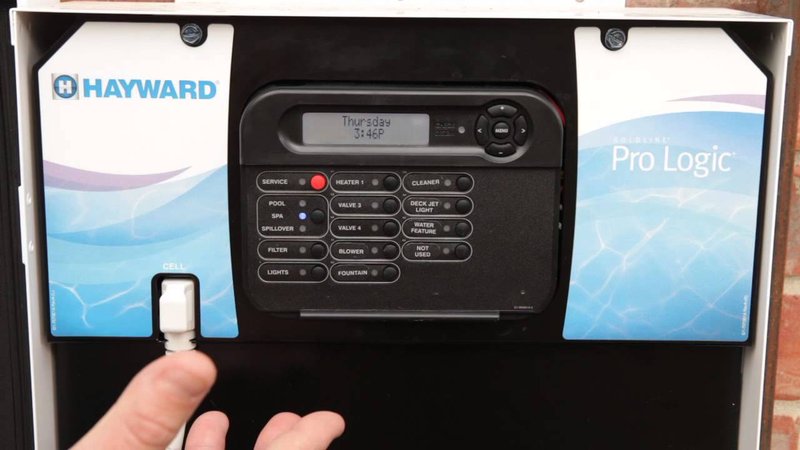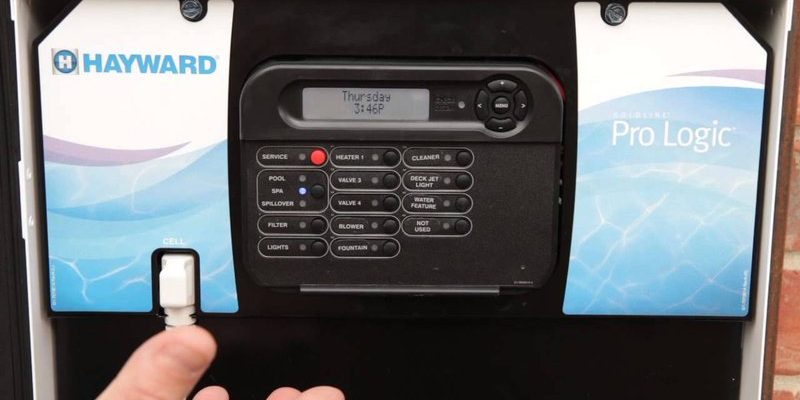
Let me explain: these remotes, like the Hayward AquaPod or AquaLogic, are handy little gadgets designed to let you control your pool or spa from pretty much anywhere in your backyard. But, just like smart TVs or smartphones, they’re not immune to hiccups—especially when it comes to *frozen screens*, *sync issues*, or even *battery problems*. If your Hayward pool remote screen is frozen, it usually means something went sideways with its software, connection, or even just the way it talks to your pool’s controller.
Let’s dig into what’s actually happening behind the scenes (or, well, behind that stuck screen), why it happens, and how you can get your Hayward remote working smoothly again—without tossing it in the pool out of frustration.
Understanding How Hayward Pool Remotes Work
Before diving into fixes, it helps to know how these remotes actually operate. Think of your Hayward remote as the “steering wheel” for your pool equipment. When you press a button, it sends commands—usually via RF (radio frequency) or Wi-Fi—back to the pool controller (such as the Hayward ProLogic, OmniLogic, or AquaLogic panel), which then tells your pumps, lights, or heater what to do.
These remotes have a small onboard computer, a screen to show you what’s happening, and a battery to keep things running. Some, like the AquaPod, are even waterproof and float in the pool—which is awesome until they decide to freeze up on you. When the screen locks up, it’s like the computer inside just hit “pause,” leaving you staring at the same info, no matter what button you mash.
Here’s the thing: this can happen for a few reasons, like a lost connection, low battery power, or a tiny software glitch. And since these remotes talk wirelessly to your pool’s controller, there’s room for interference or miscommunication. Knowing these basics is key, because the fix often depends on what’s gone wrong under the hood.
Common Reasons for a Frozen Hayward Remote Screen
Let’s get right to what you’re probably wondering: “Why is my Hayward remote screen frozen in the first place?” Honestly, it’s usually a mix of the following culprits:
- Low or Dead Battery: If your remote hasn’t been charged (or if the battery is on its last legs), you’ll often see sluggish response—or no response—before the screen finally freezes.
- Lost Sync with Controller: Sometimes the code that keeps your remote and pool panel talking gets scrambled. This is sort of like being on a phone call that suddenly drops signal.
- Software Glitch: Just like with other smart devices, the onboard software can occasionally get “stuck,” especially after a firmware update or random power surge.
- Physical or Water Damage: Even though some Hayward remotes are waterproof, a cracked screen or damaged internals (from dropping it or leaving it in direct sunlight) can cause a frozen display.
Each of these issues can look the same from the outside: your Hayward remote just stops responding, no matter what you try. The trick is to work through possible causes one by one—often, the fix is easier than you think.
How to Troubleshoot a Frozen Hayward Remote Screen
Here’s where we roll up our sleeves. If your Hayward pool remote is frozen, try these steps—move through them slowly to make sure you don’t overlook anything simple.
- Reset the Remote: Most Hayward pool remotes have a small reset pinhole (usually in the battery compartment or on the back). Use a paperclip to gently press and hold the reset button for 5–10 seconds. If there’s no dedicated reset button, remove the batteries for a full minute, then reinstall them.
- Check the Battery: Plug in your remote or swap out the batteries, depending on the model. Even if your screen lights up, a weak battery can cause glitches that look like a frozen display.
- Re-Pair or Sync the Remote: If the reset doesn’t work, you may need to re-pair your remote to the main pool controller. Usually, this involves going into the controller menu and selecting “pair remote” or “add device,” then following on-screen instructions. Make sure both devices are close together during this step.
- Inspect for Physical Damage: Examine your remote for any cracks, water inside the battery compartment, or obvious signs of wear. Even waterproof models can fail if seals are damaged.
Don’t rush—sometimes a frozen screen will unstick itself after a hard reset or fresh battery. If you skip steps, you might miss a quick fix!
If none of these tricks work, your remote’s software might need an update, or you might be dealing with a hardware problem that calls for professional help.
When and How to Perform a Hard Reset
You might be wondering, “What’s the difference between a simple restart and a hard reset?” Let me explain. Restarting is just turning the remote off and on, while a hard reset forces the onboard system to start fresh, clearing temporary glitches or corrupted code.
Here’s how to do it:
- Turn Off the Remote: Power it down if there’s a dedicated button; if not, remove the battery or charger.
- Wait at Least 60 Seconds: This isn’t just superstition. It lets all the tiny electrical bits fully discharge, wiping out any lingering code errors.
- Restart and Observe: Pop the battery back in or reconnect power. Watch the screen as it powers up—if it’s still frozen, try the reset button or “pairing” process again.
If your remote still won’t respond, this usually means the glitch runs deeper—possibly a firmware issue or a hardware fault. But in most everyday cases, a hard reset gets things moving again.
Understanding Syncing and Pairing Issues
Let’s talk about one of the sneakier causes for a frozen Hayward remote: syncing problems. Your remote and pool controller need to “speak the same language” at all times. If they fall out of sync—say, after a power outage or electrical storm—the remote might freeze as it waits for instructions that never come.
Fixing this usually involves re-pairing:
- Access Controller Settings: On the pool panel, look for a menu labeled “Remotes” or “Wireless Sync.”
- Start Pairing Mode: Follow the prompts to put both remote and controller into pairing mode. Sometimes you’ll enter a code or press a sequence of buttons.
- Wait for Confirmation: The remote’s screen should update with a connection message. If it stays frozen, try moving closer to the controller—distance (and thick walls) can mess with the signal.
Think of this as reintroducing two old friends after a disagreement. Sometimes they just need a fresh handshake to get chatting again.
Battery Maintenance: Why It Matters More Than You Think
Here’s something a lot of pool owners overlook: battery health isn’t just about turning the remote on. Weak or dying batteries are one of the most common reasons for a frozen Hayward pool remote screen. Even if your remote appears to have power, a battery that’s on the way out can create all sorts of weird glitches.
A few tips:
- Replace batteries at least once a season, especially after winter storage or heavy use in summer.
- Charge waterproof models regularly, and don’t leave them in direct sunlight for hours (heat can shorten battery lifespan).
- Use the right type of replacement battery—generic or wrong-voltage batteries can cause more problems than they solve.
If you suspect the battery is the culprit, swap it out first. It’s an easy fix and can save a lot of head-scratching.
Software Glitches and Firmware Updates
Sometimes, even after new batteries and resets, your Hayward remote screen is still frozen. That’s when you’ve probably bumped into a software issue. These remotes run on tiny programs (called firmware), and occasionally—especially after an update or a power hiccup—they can trip over a line of bad code.
If you can access your pool controller, check if there’s a firmware update available. Sometimes, updating the base station or main panel software will “wake up” the remote again. Some Hayward remotes allow for direct firmware updates via USB or over-the-air; check your manual for the steps.
If you’re not comfortable updating firmware, it’s okay to call in a pool tech. Updates can go sideways if interrupted, so don’t force it. Still, keeping your controller and remote on the latest version helps avoid weird bugs and frozen screens.
Physical Damage and Environmental Factors
Believe it or not, even tough waterproof remotes can suffer from everyday accidents. Dropping the remote on hard concrete, dunking it for hours, or leaving it out in blazing sun can all cause the screen to freeze.
What should you look for?
- Cracked screens or visible dents in the remote housing
- Water inside the battery area (use a flashlight and look for droplets or corrosion)
- Unresponsive or sticky buttons, which sometimes signal internal damage
If you spot physical damage, *don’t* try to pry the remote open or dry it out with heat—this usually makes things worse. Instead, let it air out, remove the battery, and contact a Hayward service technician. Sometimes, a simple repair or replacement is better than wrestling for hours with a dead remote.
Alternatives: Universal Remotes or Manual Controls
Let’s say you can’t revive your Hayward remote, or it’s going to take a while to get a replacement. What then? You do have other options.
- Manual controls: Most Hayward pool systems still allow for manual operation directly from the pool panel. It’s not as convenient, but it gets the job done while you wait for a fix.
- Universal or third-party remotes: Some aftermarket remotes can be paired with Hayward controllers. Just double-check compatibility—features like screen readouts or advanced scheduling may not work as smoothly.
In some cases, switching to a universal remote or using a smartphone app (if your system supports it) gets you back in control. Don’t feel stuck just because the screen is frozen!
Wrapping Up: Getting Back to Easy Pool Control
Dealing with a frozen Hayward pool remote screen can feel like your pool’s decided to play a prank on you. But honestly, most of the time, it’s a small glitch—usually a battery, software, or pairing problem that just needs a little troubleshooting.
Remember: go slow, check the obvious stuff first (like the battery and reset), and don’t be afraid to give the remote and controller a fresh start. When all else fails, there’s always manual control, and help from a pool tech is just a call away.
With a little patience and some basic steps, you’ll be back to seamless, wireless control—so you can focus on swimming and relaxing, not staring at a frozen screen.
